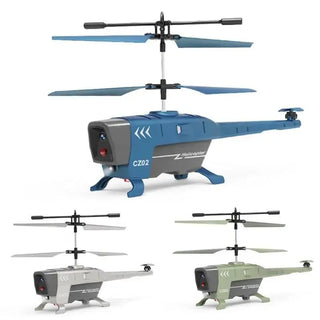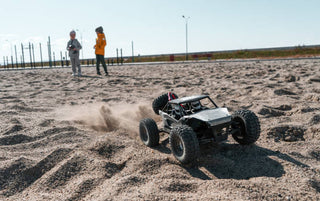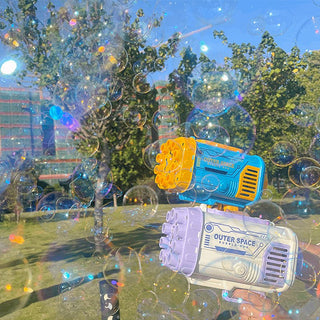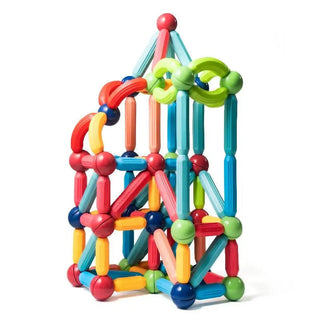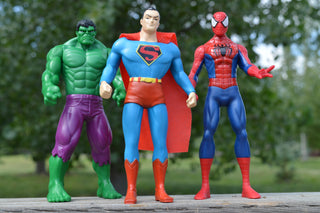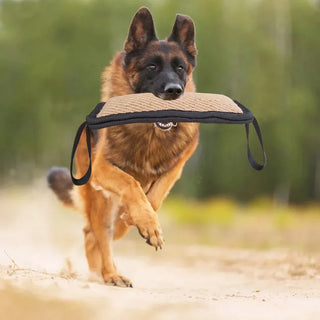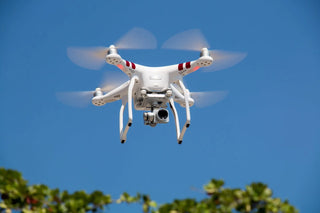Lately, folks everywhere are scratching their heads, looking up at the night sky. There's been a real uptick in drone sightings after dark, and it's got a lot of people wondering: why are there drones in the sky at night? These aren't just one-off events; we're talking about multiple reports, sometimes of several drones at once. It's a bit of a puzzle, and everyone from local residents to the FBI is trying to figure out what's going on.
Key Takeaways
- Nighttime drone sightings have become more common, with reports coming in from many different places.
- The reason for these drones flying around at night is still a big mystery, even for officials.
- Government agencies, including the FBI, are looking into these sightings and asking the public for help.
- Flying drones at night has specific rules, and breaking them can lead to problems.
- It's important for people to report any unusual drone activity, especially if it seems to cause a safety risk.
Understanding the Recent Surge in Nighttime Drone Sightings
When Did Nighttime Drone Sightings Begin?
So, about these drones... it seems like people started noticing them more frequently around mid-November. Specifically, police started looking into reports of drone activity in Morris County around November 18th. It wasn't just one or two; people were talking about lots of drones hanging around at night. It's kind of strange, right?
Where Have Unexplained Drones Been Reported?
Okay, so it's not just one place. Reports are coming in from all over. We're talking Mendham Borough, Mendham Township, Morristown, and a bunch of other towns in Morris County. Plus, Hillsborough and Branchburg in Somerset County, and even some spots in Warren County. Basically, if you're in northern New Jersey, there's a chance someone has seen these things. The FBI mentioned sightings along the Raritan River too. It's a pretty wide area, which makes you wonder what's going on.
Initial Public Reactions to Mysterious Drones
At first, people were just curious, I think. But now, there's a bit of unease. The fact that these drones are showing up in groups, hovering in the same areas night after night, is definitely raising eyebrows. Some folks have reported seeing unusually large drones, too. One person in Morris County said they saw eight drones near a school, and another claimed to have spotted fifteen over three hours. It's enough to make anyone wonder what's up.
The lack of clear answers from authorities isn't helping either. The FBI is on the case, but they're not giving out much information. They've asked the public for tips, which suggests they're really trying to figure this out. But until we know more, there's bound to be some anxiety about these mysterious nighttime visitors.
Investigating the Purpose Behind Nighttime Drone Activity

Why Are There Drones in the Sky at Night?
Okay, so drones at night. It's weird, right? You're just chilling, maybe walking the dog, and suddenly there's this buzzing thing with lights in the sky. The big question is: why? What are they doing up there? It's not like they're delivering pizzas at 2 AM (though, hey, maybe that's the future?).
- Surveillance: This is a big one. Are they watching something or someone? Could be anything from monitoring construction sites to, well, something less innocent.
- Mapping/Surveying: Maybe they're mapping out areas using night vision or thermal cameras. It's possible, but seems like a weird time to do it.
- Just for Fun?: Okay, probably not. But you can't rule out some hobbyists pushing the limits, even if it's not the smartest idea.
It's easy to jump to conclusions, but the truth is, we don't really know. And that's what makes it so unsettling. Are these drones harmless, or is there something more going on?
Potential Explanations for Drone Swarms
When you see one drone, it's a curiosity. When you see a bunch of them – a swarm – that's when things get really interesting (and a little creepy). Drone swarms suggest a level of coordination and planning that goes beyond a lone hobbyist. What could be behind it?
- Coordinated Surveillance: Multiple drones can cover a larger area more efficiently. Think of it like having multiple sets of eyes in the sky.
- Advanced Mapping: A swarm could create detailed 3D maps of an area much faster than a single drone.
- Distraction/Diversion: This is where it gets a bit more cloak-and-dagger. Could a swarm be used to distract from something else happening on the ground?
The Role of Intelligence Work in Night Operations
Let's be real, the idea of intelligence agencies using drones at night isn't exactly a far-fetched concept. Night operations offer a level of secrecy and reduced visibility that daytime operations simply can't match. It's not just about spying, though. It could be about a lot of things. The FBI asked the public to report sightings via its tips line, 1-800-CALL-FBI (800 225-5324).
- Covert Surveillance: Drones can gather information without putting personnel at risk. They can go places people can't, and they can do it quietly.
- Target Acquisition: In a more serious scenario, drones could be used to identify and track potential targets.
- Counter-Surveillance: Maybe they're not spying on us, but spying for us, monitoring potential threats.
It's all speculation, of course. But when you combine the mystery of nighttime drones with the known capabilities of intelligence agencies, it's hard not to wonder what's really going on. The large numbers of drones hovering at night in Morris County are still unexplained.
Official Responses to Unidentified Nighttime Drones
Government Response to Mysterious Drone Activity
So, what happens when random drones start showing up in the sky at night? Well, the government gets involved, of course. It's not like they can just ignore a bunch of unexplained drones buzzing around. The initial response is usually a mix of trying to figure out who's flying them and what their purpose is.
- First, they try to identify the source. Is it a rogue hobbyist, a commercial operation gone wrong, or something more serious?
- Then, they assess the potential risk. Are these drones just observing, or are they equipped for something more?
- Finally, they coordinate with local law enforcement and other agencies to gather information and monitor the situation.
The official line is usually something along the lines of "no immediate threat to public safety," but behind the scenes, there's a lot of scrambling to understand what's going on. It's a delicate balance between reassuring the public and taking the situation seriously.
Law Enforcement Involvement in Drone Investigations
Local law enforcement plays a big role in these investigations. They're the ones on the ground, receiving the initial reports and trying to get a handle on the situation. Often, they're the first responders, tasked with gathering evidence and interviewing witnesses. But let's be real, they're not exactly equipped to deal with sophisticated drone technology.
Here's a typical scenario:
- Residents report nighttime drone sightings to the police.
- Officers investigate, trying to get visual confirmation and gather any available data.
- If the drones are operating illegally or pose a threat, they attempt to locate the operator.
FBI Seeks Public Assistance in Drone Mystery
When things get really weird, the FBI steps in. That's when you know it's not just some kids playing with toys. The FBI's involvement usually means they suspect something more significant is going on, like potential espionage or a coordinated operation. They often ask for the public's help, requesting photos, videos, and any information that might help them piece together the puzzle. The FBI has publicized a phone number and website for gathering more reports related to the recent sightings of possible drones. It's a call for collective awareness, turning everyday citizens into extra eyes and ears in the sky. The best way to figure this out is if somebody can get a good solid picture of these things.
Exploring the Legal Landscape of Nighttime Drone Flights
Is It Legal to Fly a Drone at Night?
Okay, so you're seeing drones at night and wondering if that's even allowed. It's a fair question! The short answer is: it depends. The legality of nighttime drone flights is a bit of a gray area and hinges on a few things.
- Whether the drone is being used for commercial or recreational purposes makes a difference.
- The operator needs to have passed a specific test to be certified for night flights.
- Drones flying at night need to have lights that are visible for a certain distance (up to three miles, apparently).
It's kind of like driving a car; you need a license, and there are rules about when and where you can drive. Drones are similar, but the rules are still being worked out, especially when it comes to flying them when it's dark.
Aviation Safety and Drone Regulations
When it comes to drones and airplanes, safety is the name of the game. The FAA (Federal Aviation Administration) has rules in place to keep the skies safe for everyone. These rules cover things like how high a drone can fly, where it's allowed to fly, and what to do if it gets too close to an airport. Aviation safety is paramount, and drone regulations are constantly evolving to address new technologies and potential risks. For example, there are restrictions around flying drones near airports or over crowds.
Penalties for Unlawful Drone Operations
So, what happens if you break the rules? Well, the penalties can be pretty serious. We're talking fines, and in some cases, even jail time. If a drone operator endangers an aircraft or people on the ground, they could be looking at some hefty fines. Operators who endanger aircraft or pedestrians could be fined up to $75,000 and lose their drone operators’ pilot certificates. Plus, they could lose their drone pilot certificate. And it's not just about the money; reckless drone operation can put people in danger, like that time when drones over a landing zone prevented a medevac helicopter from picking up an accident victim. That's why it's super important to know the rules and follow them. Here's a quick rundown:
- Fines can range from a few hundred to tens of thousands of dollars.
- Repeat offenders can face even stiffer penalties.
- In extreme cases, criminal charges can be filed.
Identifying Potential Operators of Nighttime Drones
Commercial or Military Drone Operations
Okay, so who could be behind these nighttime drone flights? It's a pretty broad question, and honestly, there are a bunch of possibilities. One obvious thought is commercial operations. Maybe companies are using drones for deliveries or inspections at night to avoid daytime traffic or to take advantage of cooler temperatures. It's also possible that some of these drones are involved in military exercises or surveillance, especially if they're spotted near military bases or sensitive infrastructure. It's tough to say for sure without more info, but those seem like reasonable starting points.
Challenges of Flying Drones in Groups
Flying one drone is hard enough, but trying to manage a whole swarm? That's a different ballgame. Coordinating multiple drones requires some serious tech and skill. Think about it: you need to make sure they don't crash into each other, that they stay on course, and that they all perform their tasks in sync. It's not something you can just pick up overnight. The complexity increases exponentially with each additional drone. This is why it's important to understand the drone regulations in place.
- Maintaining consistent communication between drones and the operator.
- Avoiding collisions in a three-dimensional space.
- Adapting to changing environmental conditions, like wind and weather.
It's worth noting that the ability to manage drone swarms effectively is a sign of significant technical prowess. It's not something your average hobbyist can pull off. This suggests that whoever is behind these nighttime drone activities has access to advanced technology and skilled operators.
The Competence Required for Nefarious Drone Use
Let's be real, if someone's using drones for something shady, they need to know what they're doing. It's not just about flying the drone; it's about avoiding detection, understanding the aviation safety, and knowing how to use the drone's capabilities to their advantage. According to an expert, "It takes an incredible amount of competence to do something nefarious with drones.” You can't just slap a camera on a drone and expect to get away with something. You need to be smart, skilled, and have a good understanding of the technology. Otherwise, you're just asking to get caught. It's also important to consider the potential for public assistance in identifying these drones.
Public Safety Concerns Regarding Nighttime Drones
Assessing the Threat to Public Safety
Okay, so, these drones at night? It's a little unsettling, right? I mean, what if one just, like, falls out of the sky? Or worse, what if it's carrying something? The lack of clear answers from officials definitely doesn't help calm the nerves. It's hard to know how seriously to take it, but better safe than sorry, I guess.
- Potential for collisions with other aircraft.
- Risk of drones falling and causing property damage or injury.
- Concerns about surveillance and privacy violations.
It's easy to dismiss these things as just some harmless tech fun, but we really need to think about the possible downsides. What if these drones are being used to scope out neighborhoods for burglaries? Or even something more serious? We can't just ignore the potential for things to go wrong.
Interference with Medical Helicopter Rescues
Imagine this: a medical helicopter is rushing someone to the hospital, and suddenly, a drone appears in its path. Seriously scary, right? Any kind of interference with emergency services is a huge deal. It's not just about the helicopter; it's about the person who needs help. The consequences could be devastating. It's important to consider the drone regulations in place to prevent such incidents.
The Importance of Public Reporting and Imagery
So, what can we do? Well, if you see something, say something. Seriously. Get a picture, if you can do so safely, and report it to the authorities. The more information they have, the better they can figure out what's going on. It's like a giant puzzle, and every little piece helps. The FBI has even asked for the public’s tips to help unravel the mystery. Here's a simple table to show what to do:
| Action | Description |
|---|---|
| Observe | Note the time, location, and number of drones. |
| Photograph/Video | If safe, capture images or video of the drones. |
| Report | Contact local law enforcement or the FBI with your observations and media. |
The Technical Aspects of Nighttime Drone Operations
Drone Capabilities for Night Vision
Night vision on drones isn't just about slapping on a pair of goggles. It's a whole system. Some drones use infrared cameras, which pick up heat signatures. Others use low-light cameras that amplify existing light. The effectiveness really depends on the sensor quality and the ambient light available.
- Infrared cameras work even in total darkness.
- Low-light cameras need some light source, like moonlight.
- Some drones combine both for better performance.
It's interesting how much the cost affects the quality. A cheap drone might have night vision, but it won't be nearly as clear or reliable as what you'd find on a more expensive model. It's like comparing a disposable camera to a professional DSLR.
Requirements for Night-Flying Drone Lights
If you're flying a drone at night, you absolutely need lights. The FAA requires visible lights for drones operating at night. These lights help other aircraft and people on the ground see the drone. It's not just about avoiding collisions; it's about safety for everyone.
- Lights must be visible for at least three statute miles.
- They need to be a specific color, usually white or red.
- The lights should be steady, not flashing randomly.
The Complexity of Drone Swarm Technology
Drone swarms are not just a bunch of drones flying together. It's a coordinated effort that requires sophisticated software and communication systems. Each drone needs to know its position relative to the others, and they all need to follow a central command. Think of it like a flock of birds, but with computers.
- Swarm technology uses algorithms to manage drone positions.
- Communication between drones is crucial for maintaining formation.
- GPS and other sensors help drones navigate in sync.
Drone swarms can be used for all sorts of things, from coordinated light shows to search and rescue operations. The possibilities are pretty amazing, but so are the technical challenges.
Flying drones at night is a whole different ballgame. It's not just about seeing in the dark; there are special rules and gear you need to know about. If you're curious about how to fly drones safely and legally when the sun goes down, check out our website for more details.
Wrapping Things Up: What We Know (And Don't) About Those Night Drones
So, what's the deal with all these drones flying around at night? Honestly, it's still a bit of a head-scratcher. We've talked about how they're showing up in different places, and how folks are trying to figure out who's flying them and why. It's not just a simple thing, you know? There are rules about flying drones, especially at night, and some of these sightings seem to push those limits. For now, it looks like we'll just have to keep our eyes on the sky and see what else comes out. Hopefully, we'll get some real answers soon, because it's definitely got a lot of people wondering.
Frequently Asked Questions
When did people first start seeing these mystery drones at night?
People started seeing lots of drones at night around November 18th. Police in Morris County first looked into these reports.
Where have these unknown drones been spotted?
Drones have been seen in many towns in Morris County, like Mendham, Morristown, and Randolph. They've also been reported in parts of Somerset and Warren Counties. People are also talking about them a lot on social media.
How did people react when they first saw these mysterious drones?
When folks first saw these strange lights, some thought they were planes or helicopters. Others even wondered if they were UFOs! It definitely made people curious and a little worried.
Why don't we know who is flying these drones or why?
It's a complete puzzle! Law enforcement doesn't have many answers and doesn't want to guess. The FBI is leading the investigation and has asked the public for help to figure out if these drones are a danger.
Is it allowed to fly a drone at night?
The rules for flying drones at night are tricky. It depends on why you're flying, if you've passed a special test, and if you're flying over people. Drones flying at night must have lights that can be seen for up to three miles.
Are these nighttime drones dangerous?
Officials say there's no known danger to the public right now. However, one drone did get in the way of a medical helicopter rescue, which shows there could be risks. Getting good pictures of these drones could help solve the mystery.

